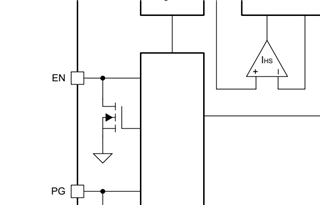Tool/software:
Hi Sir,
please help to review the schematic, as below

This thread has been locked.
If you have a related question, please click the "Ask a related question" button in the top right corner. The newly created question will be automatically linked to this question.
Hi Jericho,
For this schematic I want to mention 2 things:
1. Please connect EN pin to a resistor at least 15k ohm.
2. Are there any load transient requirements to meet? Because the compensation circuit, R197 and C583, is heavily affected by the output capacitance and load transient requirements. Can you please check Vout tolerance specs and load step condition (Iout_min, Iout_max and slew rate) and provide me this information to help me check the compensation? You can also find the calculator here: TPSM8287A-COMPONENT-CALCULATOR Calculation tool | TI.com
Besides, can you pls share what is the load SoC here?
Thank you and best regards,
Jinyi
Hi Jingyi
1.For the EN pin, can I connect a 15kΩ pull-down resistor to GND as shown in the schematic I provided earlier? Or does it need to use a series resistor instead?
2.The DSP datasheet does not mention any load transient requirements. The only related specification is that the power supply ramp step must not exceed 4mV/step.I also checked the DSP reference design, and it uses the same power IC with C583 = 2.2nF, C584 = 10pF, and R197 = 2.15kΩ, which is similar our current design.
Hi Jericho,


Thank you and best regards,
Jingyi